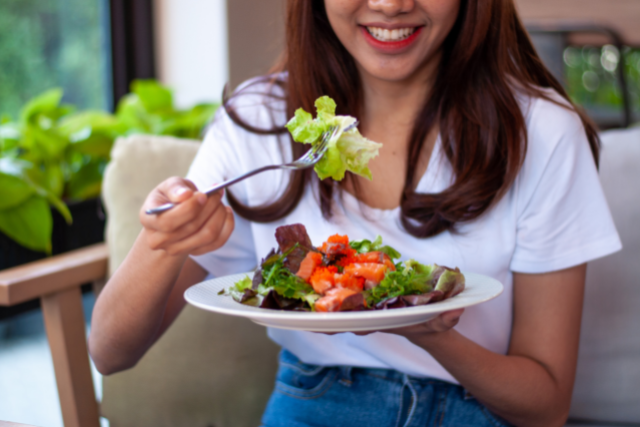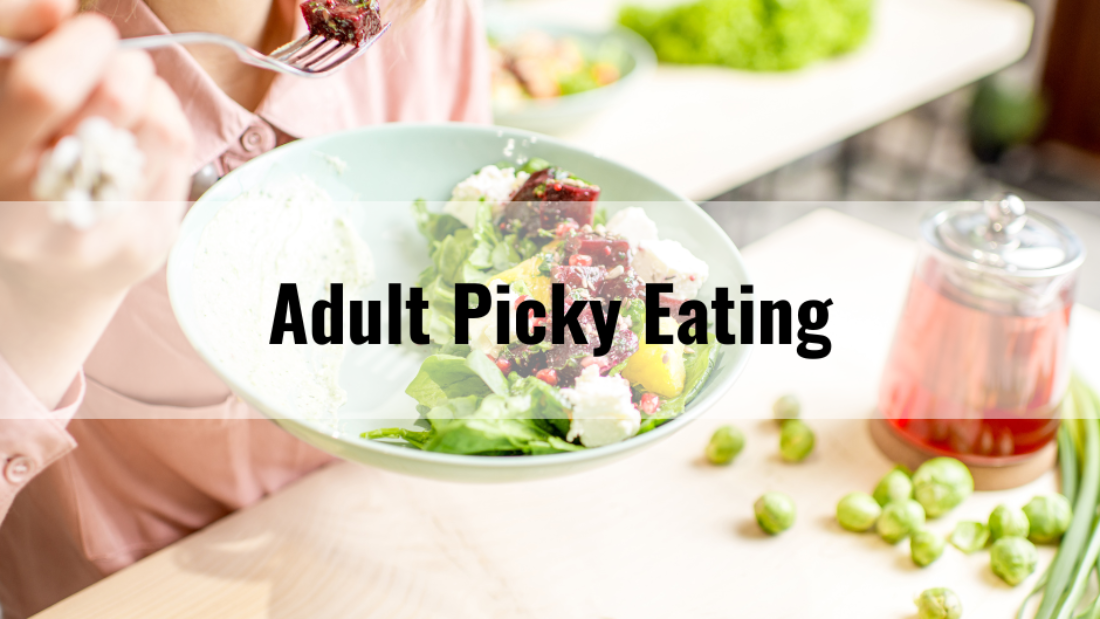People ask me this big question all the time “My child is a picky eater, what can I do next?“. Well, there is no easy and solid answer. As a dietitian and mom, I get it! Parents want what is best for their children, but they don’t know how to provide it. Parents are always in search of the “secret recipes” to get their picky eater to eat healthier or more, but there isn’t one. Up to 35% of children are described as “picky” by their parents, so you’re not alone in the struggle! It is not an easy task to incorporate healthy foods into their diet every single day. Although it may sound very challenging, there are strategies parents can use to help encourage their children to eat healthier. There are no quick and easy fixes here, and no one strategy will work for all children.
First things first, is your child a picky eater or are there other things going on that affect his/her eating? Upon further inspection in my practice, I commonly find that parents are picky eaters too. They don’t eat together with their children or they don’t share the same type of foods.
Children love to copy their parents. If your child sees you eating a diverse range of foods, they are more likely to do the same.
I’ve plenty of adult clients telling me they were labelled as “picky eater” when they were young. They grow up. Now, they don’t want to raise another “picky eater” in the family. Most parents know avocado, butternut squash, oatmeal, quinoa, millet, Greek yogurt, salmon are good for their babies who are just starting to eat solid foods. However, they end up stop offering them because they don’t know how or they do not know of alternatives to boiling or steaming.
ADULT PICKY EATING
Being a picky eater is not necessarily a problem. There is no rule that says you need to like every single food that exists in the world. If picky eating causes you anxiety or prevents you from socializing, it may be more of a concern (Read this article about Avoidant/Restrictive Food Intake Disorder [ARFID]). Otherwise it can be a health concern if you’re not meeting your nutritious needs or living on a super restricted diet.
Ellyn Satter states that while some aspects of picky eating are socially acceptable, such as choosing which foods you want , leaving unwanted food on your plate, and taking more of one food even if there’s uneaten food on your plate. However, it is not socially acceptable to draw attention to your food refusal or request food that is not on the menu.

I recently tried a Brussel Sprouts recipe. I have never tried Brussels Sprouts in my life, ever !! My mum never made it (she didn’t even know how to prepare it). After some thought, I bought fresh brussels sprouts and roasted them with only a few ingredients, and promptly loved them! Changing the method of preparation can significantly alter the appearance and taste of a food, making it a lot more palatable and enjoyable.
So, before complaining about your children not eating the broccoli that you serve for dinner, why not start looking at your dinner plate. Are you a good role model? Do you have some foods that you absolutely hate it? Are you eating all your servings of vegetables and fruit each day?

HOW TO BECOME A GREEN LOVER
What do you do if you want to try introducing more vegetables (or other foods) into your daily.
- Buy fresh vegetables and fruit when on sale to save money.
- If you are short on time, buy convenience items in the produce section. Try pre-cut, pre-washed vegetables – a bag of salad, spinach, baby carrots, snap peas, or broccoli.
- Start your meal with a salad made from spinach, lettuce, or grated carrot. Top it off with chopped vegetables or fruit, like orange, apple, strawberries or pomegranate.
- Keep washed and sliced carrots, celery, peppers, zucchini, or cucumber at eye-level in the fridge for a quick snack or to add to a lunch bag.
- Add fresh or frozen vegetables to spaghetti sauce, soups, stews, chilli, casseroles and curries.
- Double up on the vegetables in recipes. A soup called for a carrot? Add two, A stir-fry calls for half a pepper? Add a whole one.
- Choose or make pizza topped with mushrooms, zucchini, red or green peppers, broccoli, spinach, shredded carrots, tomato slice, or pineapple.
- Adding simple flavours to vegetables. Try new seasonings – garlic, onion, ginger, a bit of olive oil, and a sprinkle of pepper can transform vegetables.
- Put lots of sliced or shredded vegetables on sandwiches and in wraps.
- Pairing your favourite veggie with guacamole or hummus.
- Add green leafy veggies such as kale or spinach to morning smoothie.
- Scrambled eggs with chopped spinach, mushrooms, and tomatoes can be eaten as both as side dish at dinner with rice, or as a breakfast item in the morning.
- Add sliced fresh fruit to cereal or yogurt or mix into pancake batter.
- Have a bowl of washed fruit on your kitchen counter for an easy to grab snack.
- Freeze fruit that has become too ripe, to use later in baking or smoothies.
Stop labeling yourself as a “non-veggie eater”.
True, a diet with many fruits and vegetables will likely be more colourful and nutrient dense than one with only 3 or 4 choices, but progress over perfection, it will allow yourself a judgement free, unpressured environment to congratulate yourself on your veggie success, and when ready, slowly introduce new foods and/or methods of preparation.
INCREASE VARIETY IN YOUR DIET
As Ellyn Satter advises, provide yourself repeated, unpressured opportunities to introduce new foods. Don’t force yourself to try a new food, allow yourself the freedom to try it and the freedom to not finish it. By regularly exposing yourself to a new food, you just may trick yourself into liking it!
STEPS TO INTRODUCE MORE VEGGIES
If you are a picky eater, and want to try introducing more vegetables (or other foods) into your family daily repertoire, here’s the step by step:
- Take inventory of the vegetables you DO like eating and eat them more often!
- Chose a new veggie (you either have never tried or haven’t purchased in a very long time), and prepare it along with a favourite food.
- Don’t force yourself to eat the new food, and don’t feel bad if you weren’t able to enjoy it.
- Keep introducing and re-introducing new veggies – it will likely take many times of tasting until you’re used to a flavour, texture and taste, but don’t give up! Having a larger food base to choose from gives you more flexibility around meal time and can also lead to a healthier you!
Choosing veggie and fruit is about making an EVERY DAY food decision, not just going by taste. It’s about FUELING your body well, and if you don’t eat enough currently, developing healthy habits that your brain learns as the path of least resistance.


Leave A Comment